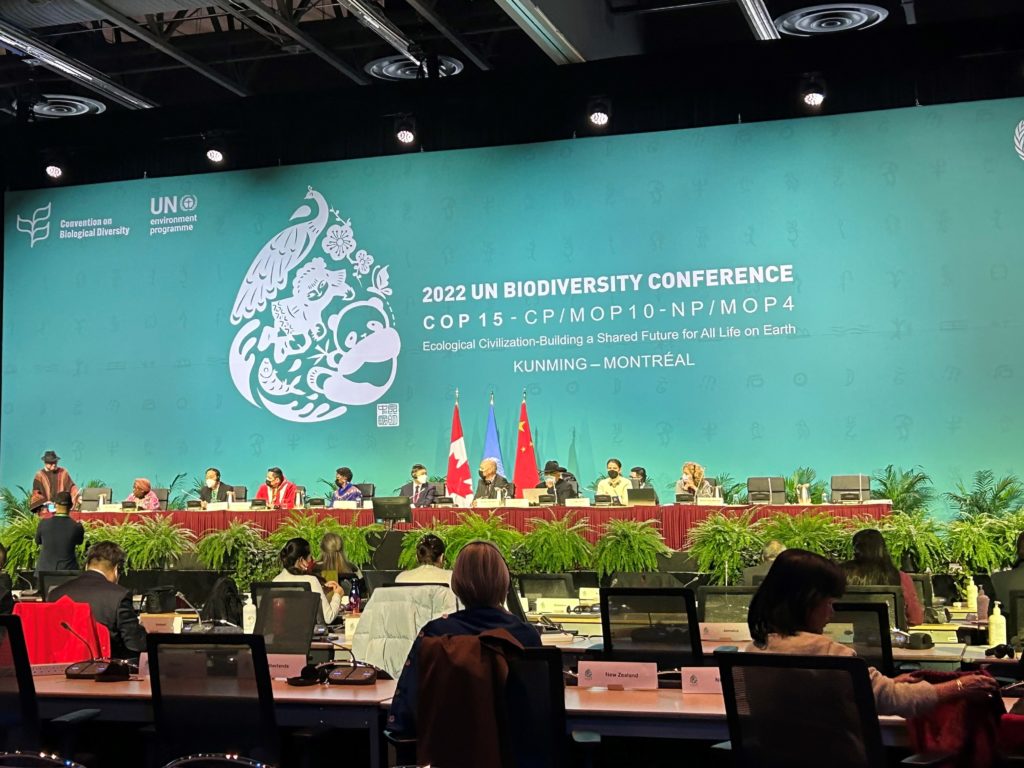Center staff have now returned from their adventures in Montreal, attending the UN Biodiversity Conference. Ecological connectivity—the unimpeded movement of species and the flow of natural processes that sustain life on Earth—was an exciting topic of negotiations and discussions during what is officially referred to as the 15th Conference of the Parties (CoP-15) to the Convention on Biological Diversity (CBD). In the final days of the conference, the governments of 196 countries adopted the Kunming-Montreal Global Biodiversity Framework on 18 December 2022. This milestone agreement will now serve as the strategic plan for implementation of the Convention over the period 2022-2030. To date, this is the most significant agreement for bolstering global cooperation to conserve and restore nature.
To support measurement of progress under the goals and targets of the Framework, CoP-15 also adopted a Monitoring Framework, including key indicators for connectivity developed by the Center. Together, these frameworks are intended “to catalyze, enable and galvanize urgent and transformative action by Governments, subnational and local governments, and with the involvement of all of society to halt and reverse biodiversity loss.”
Ecological connectivity, and its measurement, is now elevated in importance and focus since being first addressed by Aichi Target 11, agreed to in 2010. Key goals and targets of the new framework have an enhanced acknowledgement of the fundamental contribution that ecological connectivity makes to functioning ecosystems and species.
Here follows the exact connectivity-related language adopted as part of the Framework:
GOAL A: The integrity, connectivity and resilience of all ecosystems are maintained, enhanced, or restored, substantially increasing the area of natural ecosystems by 2050;
Human induced extinction of known threatened species is halted, and, by 2050, extinction rate and risk of all species are reduced tenfold and the abundance of native wild species is increased to healthy and resilient levels;
The genetic diversity within populations of wild and domesticated species, is maintained, safeguarding their adaptive potential.
…
TARGET 2: Ensure that by 2030 at least 30 per cent of areas of degraded terrestrial, inland water, and coastal and marine ecosystems are under effective restoration, in order to enhance biodiversity and ecosystem functions and services, ecological integrity and connectivity.
TARGET 3: Ensure and enable that by 2030 at least 30 per cent of terrestrial, inland water, and of coastal and marine areas, especially areas of particular importance for biodiversity and ecosystem functions and services, are effectively conserved and managed through ecologically representative, well-connected and equitably governed systems of protected areas and other effective area-based conservation measures, recognizing indigenous and traditional territories, where applicable, and integrated into wider landscapes, seascapes and the ocean, while ensuring that any sustainable use, where appropriate in such areas, is fully consistent with conservation outcomes, recognizing and respecting the rights of indigenous peoples and local communities, including over their traditional territories.
…
TARGET 12: Significantly increase the area and quality and connectivity of, access to, and benefits from green and blue spaces in urban and densely populated areas sustainably, by mainstreaming the conservation and sustainable use of biodiversity, and ensure biodiversity-inclusive urban planning, enhancing native biodiversity, ecological connectivity and integrity, and improving human health and well-being and connection to nature and contributing to inclusive and sustainable urbanization and the provision of ecosystem functions and services.



